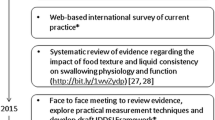Abstract
Every day parents make choices about the source of water their families consume. There are many contributing factors which could affect decisions about water consumption including taste, smell, color, safety, cost, and convenience. However, few studies have investigated what parents with young children think about water quality and safety in the US and how this affects the choices they are making. This study aimed to describe the perceptions of parents with regard to water quality and safety and to compare bottled water and tap water use, as well as to examine motivation for water choices. We conducted an online questionnaire to survey parents living in Pennsylvania about water quality and safety, and preference for bottled versus tap water. Parents were recruited through child care centers, and 143 surveys were returned. The survey results showed high overall scores for perception of tap water quality and safety, and a preference for tap water over bottled water. We found that parents were concerned for the environmental impact that buying bottled water may have but were also concerned about potential contamination of tap water by natural gas drilling processes and nuclear power plants. These findings regarding parental concerns are critical to inform pediatric health care providers, water sellers, and suppliers in order that they may provide parents with the necessary information to make educated choices for their families.
Similar content being viewed by others
References
Rodwan, J. (2010). International bottled water association report bottled water 2009: Challenging circumstances persist: Future growth anticipated. Bottled Water Reporter, 10–16.
Abrahams, N., Hubbell, B., & Jordan, J. (2000). Joint production and averting expenditure measures of willingness to pay: Do water expenditures really measure avoidance costs? American Journal of Agricultural Economics, 82(2), 427–437.
Doria, M., Pidgeon, N., & Hunter, P. R. (2009). Perceptions of drinking water quality and risk and its effect on behaviour: A cross-national study. Science of the Total Environment, 407(21), 5455–5464. doi:10.1016/j.scitotenv.2009.06.031.
Hobson, W., Knochel, M., Byington, C., Young, P., Hoff, C., & Buchi, K. (2007). Bottled, filtered, and tap water use in Latino and non-Latino children. Archives of Pediatric Adolescent Medicine, 161, 457–461.
Jones, A. Q., Dewey, C. E., Dore, K., et al. (2006). Public perceptions of drinking water: A postal survey of residents with private water supplies. BMC Public Health, 6, 94. doi:10.1186/1471-2458-6-94.
Jones, A. Q., Dewey, C. E., Dore, K., et al. (2005). Public perception of drinking water from private water supplies: Focus group analyses. BMC Public Health, 5, 129. doi:10.1186/1471-2458-5-129.
Greer, F. R., Shannon, M., & The Committee on Nutrition, the Committee on Environmental Health. (2005). Infant methemoglobinemia: The role of dietary nitrate in food and water. Pediatrics, 116(3), 784–786. doi:10.1542/peds.2005-1497.
Rogan, W., Brady, M., & Committee on Environmental Health, Committee on Infectious Diseases. (2009). Drinking water from private wells and risks to children. Pediatrics, 123, e1123–e1137. doi:10.1542/peds.2009-0752.
Levallois, P., Grondin, J., & Gingras, S. (1999). Evaluation of consumer attitudes on taste and tap water alternatives in Quebec. Water Science and Technology, 40(6), 135–139.
Hurd, R. (1993). Consumer attitudes survey on water quality issues. AWWA Research Foundation and the American Water Works Association.
Doria, M. (2010). Factors influencing public perceptions of drinking water quality. Water Policy, 12, 1–19. doi:10.2166/wp.2009.051.
U.S. Environmental Protection Agency. (2005). Water health series: Bottled water basics. Retrieved from: http://www.epa.gov/safewater/faq/pdfs/fs_healthseries_bottlewater.pdf.
Cone, LLC. (2007). Research report: 2007 cone cause evolution & environmental survey. Retrieved from http://www.coneinc.com/files/2007ConeSurveyReport.pdf.
Doria, M. (2006). Bottled water versus tap water: Understanding consumers’ preferences. Journal of Water and Health, 4(2), 271–276.
Napier, G. L., & Kodner, C. M. (2008). Health risks and benefits of bottled water. Primary Care, 35(4), 789–802.
Gashler, K. (2008). Thirst for bottled water unleashes flood of environmental concerns. USA Today, 7 June 2008.
Llanos, M. (2005). Plastic bottles pile up as mountains of waste. MSNBC.com., 3 March 2005.
Finkel, M. L., & Law, A. (2011). The rush to drill for natural gas: A public health cautionary tale. American Journal of Public Health, 101(5), 784–785. doi:10.2105/AJPH.2010.300089.
Widespread destruction from Japan earthquake, tsunamis. (2011). Retrieved from http://www.articles.cnn.com/2011-03-11/world/japan.quake_1_hokkaido-tsunami-east-japan-railway?_s=PM:WORLD. 11 March 2011.
World Nuclear Association. (2010). Three Mile Island accident. Retrieved from http://www.world-nuclear.org/info/inf36.html.
Logue, J. N., & Sivarajah, K. (2010). A synopsis of 30 years of major accomplishments by the Pennsylvania Department of Health in Environmental Health (part 1 of 2): The 1980 s. Journal of Environmental Health, 73(5), 14–17.
Hagan, J. F., Shaw, J. S., & Duncan, P. M. (Eds.). (2008). Bright futures: Guidelines for health supervision of infants, children and adolescents (3rd ed.). Elk Grove Villiage, IL: American Academy of Pediatrics.
Sriraman, N., Patrick, P., Hutton, K., & Edwards, K. (2009). Children’s drinking water: Parental preferences and implications for fluoride exposure. Pediatric Dentistry, 31(4), 310–315.
Pennsylvania Department of Environmental Protection. Private Water Wells in Pennsylvania Retrieved 31 Jan 2011, from http://www.dep.state.pa.us/dep/deputate/watermgt/wc/Subjects/SrceProt/well/default.htm.
U.S. Census Bureau. (2000). Pennsylvania QuickFacts. Households, 2000. Retrieved from http://www.quickfacts.census.gov/qfd/states/42000.html.
Acknowledgments
This research study was completed without funding. The authors gratefully acknowledge the parents who completed the survey and the child care center directors who assisted with distribution. The authors are also extremely grateful to Dr. Kristen Kjerulff, Dr. Chenwu Yang, and Dr. Miguel Doria for their support throughout the study.
Author information
Authors and Affiliations
Corresponding author
Rights and permissions
About this article
Cite this article
Merkel, L., Bicking, C. & Sekhar, D. Parents’ Perceptions of Water Safety and Quality. J Community Health 37, 195–201 (2012). https://doi.org/10.1007/s10900-011-9436-9
Published:
Issue Date:
DOI: https://doi.org/10.1007/s10900-011-9436-9




